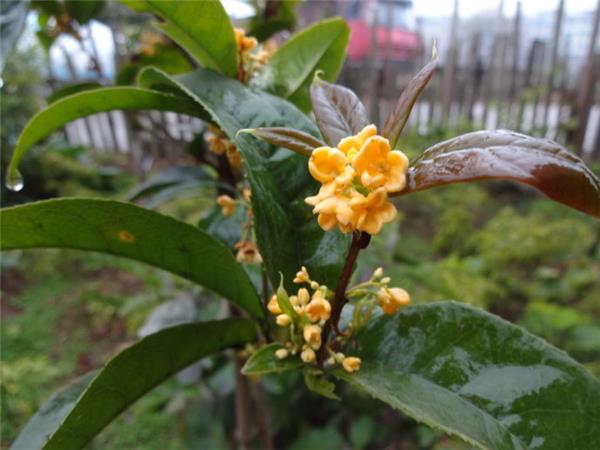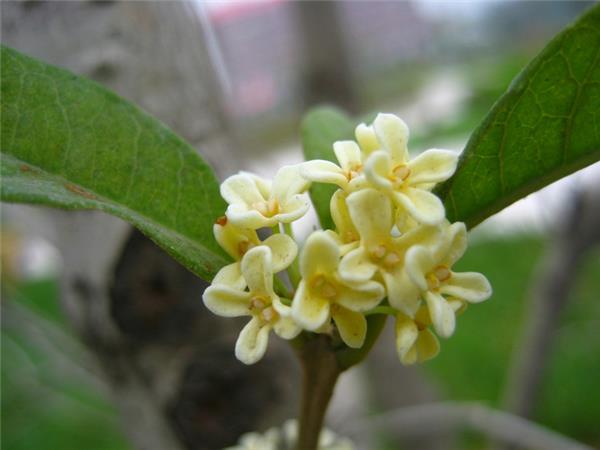Propagation mode and pest control of laurel
Laurel, also known as four seasons laurel, is a common flowering plant. It has lovely flower clusters, elegant and pure flowers, light and attractive fragrance, and has a very high culture value.

The propagation mode of laurel
Cuttings: hardwood cuttings are carried out in March in spring. Select the autumn shoot of the previous year as cuttings, 7 to 8 meters long, with heel, insert soil with sand or frogstone, close with plastic arch shed after insertion, and shade, often moisturize, the survival rate is about 60%. The twigs are inserted with leaves, and the automatic spray all-light inserting machine is used, which can also be carried out in the growing season. During border planting in the open field from June to July, the planting depth is 4-6 cm. After pouring enough water, the border is shaded and moisturized, only a little sunshine can be seen in the morning and evening, the laurel can take root in about 40 days, and the survival rate is more than 90%. Plastic arch shed is used to protect against cold in winter, and it is planted in the second year.
High-altitude crimping: cut or ring peel the 2012 branches, then wrap them with opposite bamboo tubes, flowerpots, thick paper tubes or plastic films, and fill the gaps with rice chaff ash, moss, culture soil, perlite and other substances, often keep moist, but the moisture is not easy to be too much, and can be cut off from the mother plant after rooting. The inner diameter of the high-pressure bag made of plastic film is generally 4~5cm and the length is 8~10cm. The site of scratching and girdling is at the bottom of the node, where it is easy to root, and the width of the peeled phloem is 1~2cm.

Sowing: the seeds were collected in September, dried with pericarp and stored in sand, soaked in 50 ℃ warm water for 2 minutes before sowing, and then soaked in cold water for 24 hours to promote the early germination of laurel seeds. Sowing in spring with a row spacing of 15 cm. The covered soil is 2 meters thick, covered with grass, sprouted and unearthed in May, set up a shed to shade in time, keep the seedlings strong and weak in overcast and rainy days, and the distance between plants should not be too large, which is conducive to shading each other, and the height of seedlings in the same year can reach about 10 meters. It can be transplanted with soil balls from March to April in spring.
Grafting: the rootstocks used for grafting laurel are mainly privet, white wax, cloves, tassel and so on. The disadvantage of Ligustrum lucidum as rootstock is that the root system is too developed, it is not suitable for pot planting, and it blossoms late. The disadvantage of white wax as rootstock is that it has a short life span, and it is easy to shed leaves and blossom less in winter. When cloves are used as rootstocks, the trunk is thick and thin, and the tree is top-heavy. Tassel rootstock has good affinity, drought and cold resistance, strong adaptability, long life, and the age of the tree can be more than a hundred years. Therefore, the most suitable rootstock for grafting propagation of potted sweet-scented osmanthus is tassel.

Disease control of laurel
Blight: the pathogen of the disease mostly invades from the leaf edge and leaf tip, and occurs at the leaf edge and leaf tip. In the early stage of the disease, light brown dots appeared on the leaves, which gradually expanded into round or irregular plaques, and then expanded into near round or irregular grayish brown spots, with dark brown edges. Blight occurs from July to November and can occur year-round in greenhouses with poor environmental conditions. The pathogen is infected by conidia through wind and water. The environment of high temperature, high humidity and poor ventilation is beneficial to the disease. The disease was more serious in the old leaves and lower leaves of the plant during the weakening of plant growth and after overwintering.
Anthracnose: the disease infects sweet-scented osmanthus leaves. At the initial stage of the disease, small chlorotic spots appeared on the leaves, and gradually enlarged to form round, semicircular or oval spots. The disease spot is light brown to grayish white, with reddish-brown rings on the edge. At the initial stage of the disease, spray 1V 2v 200 times Bordeaux solution, and then spray 50% carbendazim wettable powder 1000 times or 50% benzoate wettable powder 1000 to 1500 times. The serious disease area should be soaked and disinfected with 1000 times potassium permanganate solution when the seedlings came out of the nursery.

Laurel is so named because it is different from other varieties and can blossom all the year round, so it is also called "four seasons laurel". It has very high ornamental value and is one of the first choices for courtyard beautification.
Related
- Wuhan Hospital Iron Tree Blooming Result Was Instantly Frightened by the Gardener Master
- Which variety of camellia is the most fragrant and best? Which one do you like best?
- What is the small blue coat, the breeding methods and matters needing attention of the succulent plant
- Dormancy time and maintenance management of succulent plants during dormancy
- Minas succulent how to raise, Minas succulent plant pictures
- What are the varieties of winter succulent plants
- How to raise succulent plants in twelve rolls? let's take a look at some experience of breeding twelve rolls.
- Attention should be paid to water control for succulent plants during dormant period (winter and summer)
- Watering experience of twelve rolls of succulent plants
- Techniques for fertilizing succulent plants. An article will let you know how to fertilize succulent plants.



